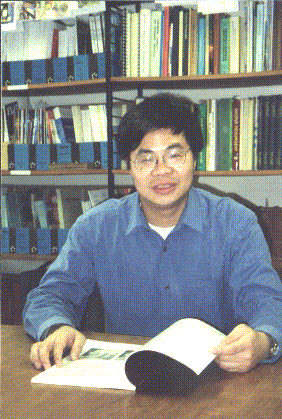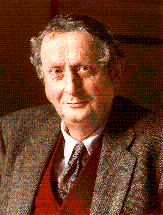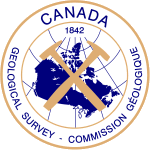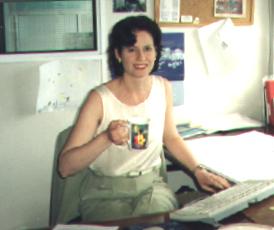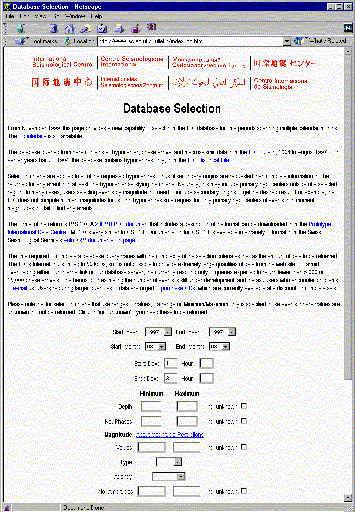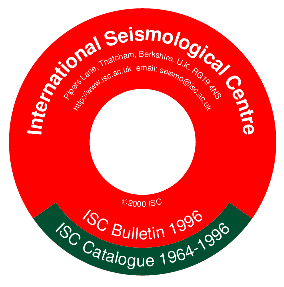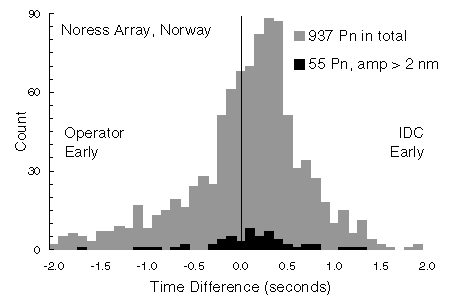|
The ISC presented three posters at the AGU meeting in San
Francisco last December on differences between independently
picked arrival times, the future of seismic bulletins, and
accessing data from the ISC.
The
poster on differences between arrival time picks was
"one scary poster", according to Paul Richards of the
Lamont-Doherty Earth Observatory. In this poster Ray
Willemann compared onset times at the same station but
picked independently by station operators and by analysts at
the prototype IDC (agency code EIDC in the Bulletin).
Though based on waveform data from the same or co-located
sensors, EIDC readings are earlier on average by several
tenths of seconds for each station and phase reviewed. The
average differences are small compared with the scatter,
which is typically about 1 second for primary arrivals and
larger for secondary arrivals. Nevertheless, the systematic
differences have high statistical significances owing to the
large number of contributing data. This concerned Professor
Richards because efforts to improve earthquake locations
using elaborate station correction functions might come to
nought if station timing biases depend on record readers
more than earth structure.
The
poster on seismic bulletins asked what priorities ought
to be set for the coming era of ubiquitous broadband digital
data. The important data types to include might depend on
whether the Bulletin is intended to serve primarily study of
earth structure, earthquake physics or seismic hazard. The
most controversial part of the poster may have been the
suggestion that ISC might consider computing higher-order
moment tensors in the future. Higher-order moment tensors
are a representation of distributed sources that avoids
favouring any particular kinematic model. While some
seismologists are concerned that such computations are
inherently under-determined, Jeff McGuire and Tom Jordan of
MIT presented a paper at the meeting showing that positivity
constraints that only require the source to be physically
meaningful often stabilise the inversion.
The most pleasing feature of the ISC
presentations, however, may be that the
poster on data access has already become out of date!
Among the "future plans" described in the poster,
"historical" hypocentres from 1904-1963 were posted to the
ISC web site in late 1999 and the new page for queries
spanning multiple calendar months is announced in this
newsletter. Soon from the ISC, promised the poster, are
selections from the Bulletin by e-mail in response to
AutoDRM messages and recently received readings, i.e., those
being collected for future issues of the Bulletin.
| 
